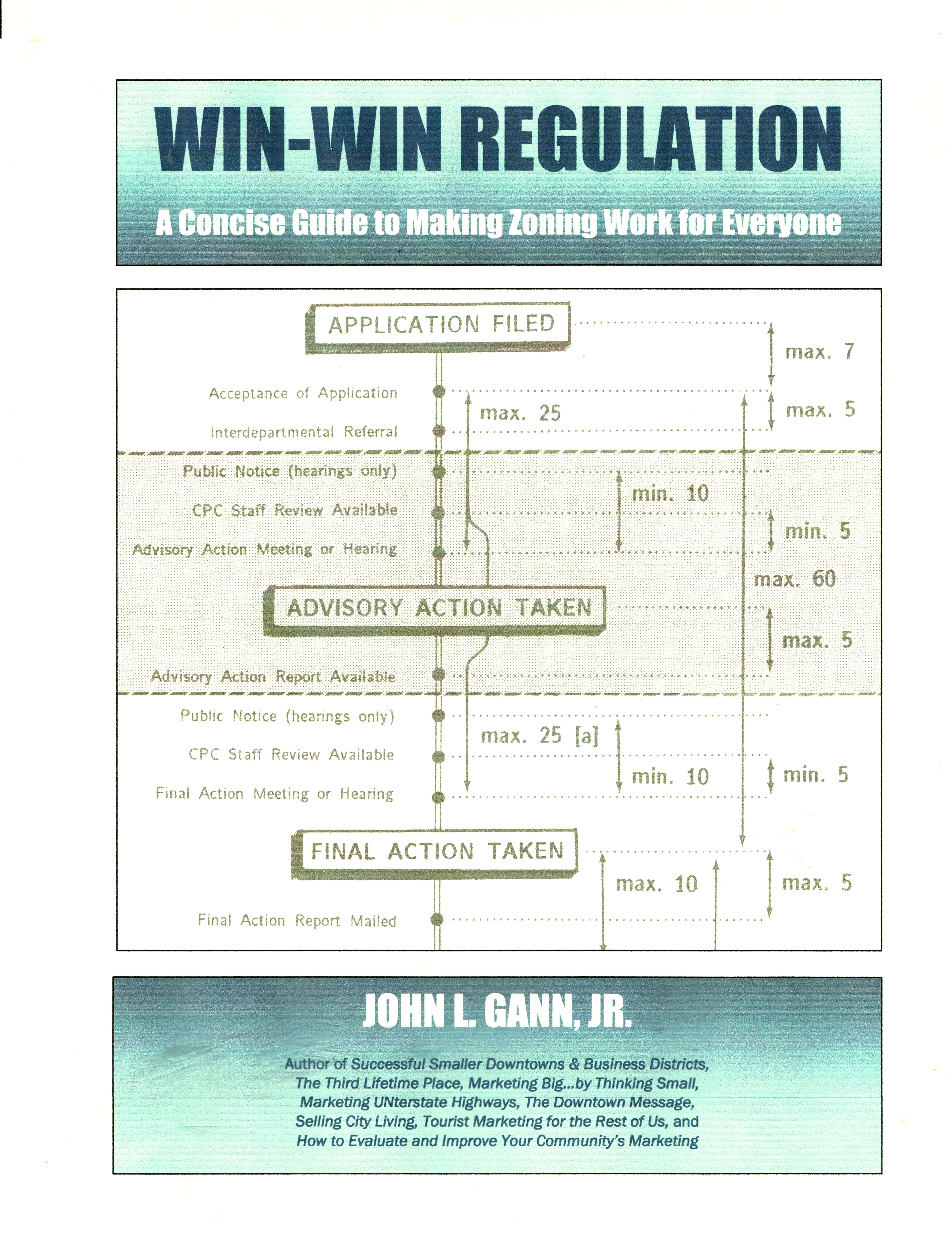Win-Win: A New Way to Think About Zoning
What has fueled the controversy and prompted successful litigation against some of its uses has been its win-lose character. For the public to win, property owners and developers had to lose.
In its second century, land use control can become more of a win-win activity that endeavors to make winners of both the public interest and private property rights. That is the message of Win-Win Regulation: A Concise Guide to Making Zoning Work for Everyone.
In its pages, John Gann says this can be done with new thinking about both the substance and the form of local land use ordinances in both large matters and small.
The substance involves rethinking what really needs to be regulated, what alternatives there are for doing that, and how rules can be made more flexible.
And rethinking the form can make regulations more user-friendly--easier to find, to read, to interpret, and to apply. The manual consists exclusively of illustrations of both from approved examples from real ordinances.
* Eight keys to Win-Win Regulations: p. 4
* Three innovative ways to treat nonconformities: p. 6
* The advantages of "rezoning in advance": p. 16
* Are you regulating sign content without knowing it? p. 18
* A remedy for approval delays: p. 12
* Graphics to use; graphics to avoid: p. 26
* Should your regulations be more colorful? p. 11
* Advantages of zoning for groups rather than uses: p. 14
* Staff approvals of variances for homeowners: p. 11

More Things to Think About
* Sign face area: if you don't use it, you don't lose it: p. 19
* Where to put numbers and frequently consulted verbiage: p. 24
* A suburban village enjoys Reader's Digest zoning: p. 14
* Controlling all signs by regulating only three types p. 18
* Unless you have a Playmate, avoid centerfolds: p. 25